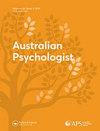社区主导的澳大利亚地区和农村年轻人自杀预防倡议:Live4Life模式
IF 2
4区 心理学
Q2 PSYCHOLOGY, MULTIDISCIPLINARY
引用次数: 0
摘要
生活在澳大利亚偏远地区和农村地区的年轻人自杀风险增加,并且在寻求心理健康支持方面存在独特的障碍和促进因素。因此,需要制定针对社区内年轻人的具体心理健康和自杀预防方案。尽管如此,关于此类干预措施的同行评议文献还是很少。在这篇评论中,我们概述了一个现有的基于地方的农村项目;Live4Life于2009年在维多利亚州的马其顿山脉创立,目前在澳大利亚的9个地区社区开展业务。我们证明,Live4Life有希望建设整个社区的能力,支持年轻人认识到心理健康问题并寻求帮助。因此,我们认为有必要进行进一步的评估,将Live4Life社区与匹配的对照社区进行比较,以评估该计划的长期影响,并支持Live4Life在澳大利亚地区和农村社区的升级。关于这一主题的已知情况:在澳大利亚,年轻人面临着最高的精神疾病负担,青少年心理健康挑战对生活功能和质量产生了长期影响。澳大利亚的边远地区和农村地区面临的风险尤其大,自杀率上升,获得心理健康服务面临更多障碍。已确定区域和农村社区需要基于地方的自杀预防方法,这些方法需要当地社区参与。本专题补充内容:我们概述了由社区主导的“Live4Life”计划,该计划旨在提高社区对青少年心理健康的认识,并鼓励年轻人寻求帮助。我们将讨论现有证据,证明Live4Life模型对实施该模型的社区的潜在影响。我们为未来的研究提供建议,通过比较与Live4Life实施的社区与匹配的对照社区,评估该计划的有效性。本文章由计算机程序翻译,如有差异,请以英文原文为准。
A community-led suicide prevention initiative for young people in regional and rural Australia: the Live4Life model
ABSTRACT Young people living in regional and rural areas of Australia are at an increased risk of suicide and have unique barriers and facilitators to seeking mental health support. As such, specific mental health and suicide prevention programmes that are tailored to young people within their communities are required. Despite this, peer-reviewed literature on such interventions is scant. In this commentary, we outline an existing rural place-based programme; Live4Life, created in 2009 in the Macedon Ranges, Victoria, and now running in nine Australian regional communities. We demonstrate that Live4Life shows promise in building the capacity of whole communities to support young people to recognise and seek help for mental health concerns. As such, we argue the need for further evaluation comparing Live4Life communities with matched control communities to assess the long-term impact of the programme and to support the upscaling of Live4Life across Australian regional and rural communities. Key Points What is already known about this topic: Young people face the highest burden of mental ill-health in Australia, with adolescent mental health challenges having long-lasting impacts on functioning and quality of life. Regional and rural Australians are particularly at risk, experiencing increased suicide rates and additional barriers to accessing mental health services. Place-based approaches to suicide prevention, which engage local communities have been identified as a need for regional and rural communities. What this topic adds: We outline the community-led programme Live4Life, which aims to increase community knowledge of youth mental health and encourage help-seeking behaviour in young people. We discuss the existing evidence demonstrating the potential impact of the Live4Life model on the communities in which it is implemented. We offer suggestions for future research evaluating the efficacy of the programme by comparing communities with Live4Life implemented to matched control communities.
求助全文
通过发布文献求助,成功后即可免费获取论文全文。
去求助
来源期刊

Australian Psychologist
PSYCHOLOGY, MULTIDISCIPLINARY-
CiteScore
3.70
自引率
5.30%
发文量
32
期刊介绍:
The Australian Psychologist is the official applied practice and public policy journal of the Australian Psychological Society. As such, the journal solicits articles covering current issues in psychology, the science and practice of psychology, and psychology"s contribution to public policy, with particular emphasis on the Australian context. Periodically, Australian Psychological Society documents, including but not limited to, position papers, reports of the Society, ethics information, surveys of the membership, announcements, and selected award addresses may appear in the journal.
 求助内容:
求助内容: 应助结果提醒方式:
应助结果提醒方式:


